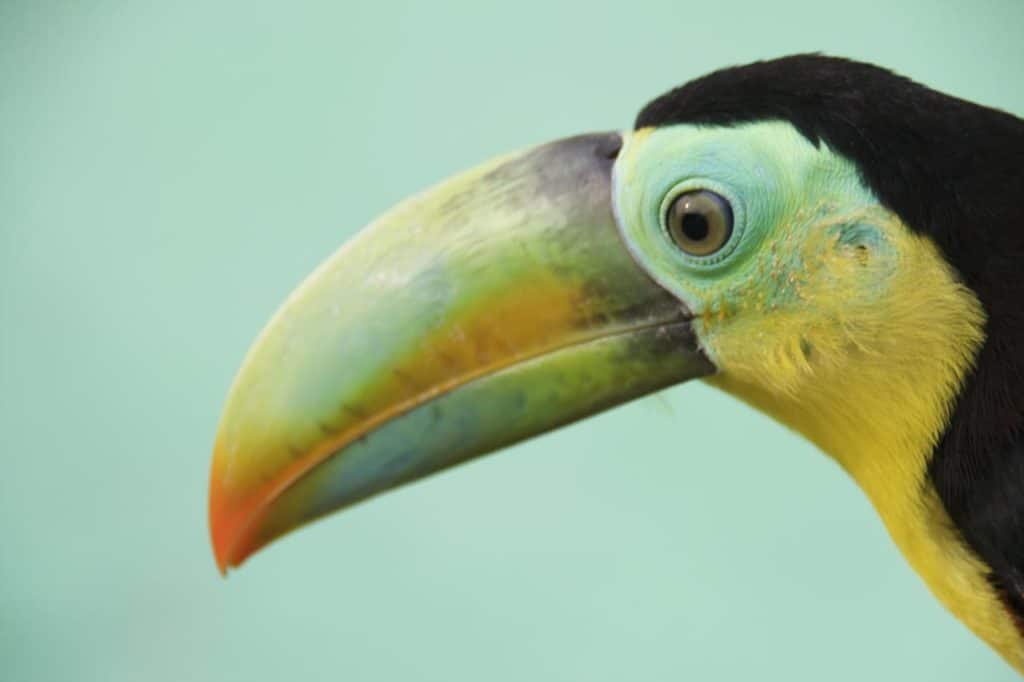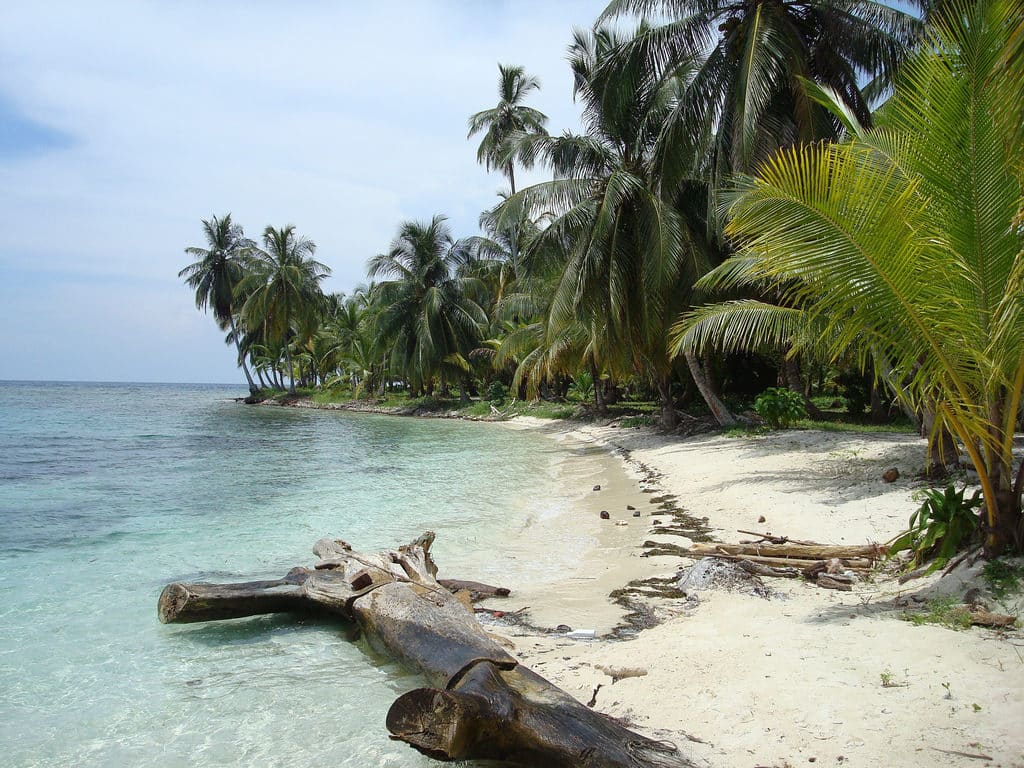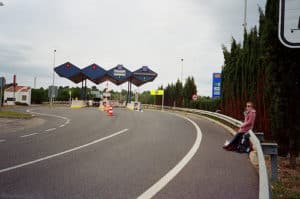Table of Contents
Tips for Crossing the Darien Gap
When planning your trip between Central and South America, whether you’re a backpacker or a luggage puller, Darien National Park must be discussed and crossed. The Darien is an infamous stronghold of the Colombian revolutionary group, FARC, who have inhabited this national park region for more than three decades. Their presence is still a major threat to safety in the forms of extortion, kidnapping, and death. It is not recommended to enter the area. Although there are groups and individuals who attempt to cross every year, the vast majority of travelers hedge their bets on boats and airplanes where kidnapping is not common and survival is the status quo–not a question mark.
A few ways to make the crossing
There are a number of ways to cross this region including direct Panama City to Cartagena flights or by a series of Kuna water taxis to the first border town. The option I chose was to sail from Panama to Colombia through the Caribbean Sea. The San Blas region consists of 385 protected tropical islands which are the highlight of this adventurous route. Visiting the San Blas on a tour costs roughly $150 from Panama City. Because sailing includes an intimate tour of the region, it can be an economical way to circumnavigate the Darien. These areas have a long history of Spanish and pirate influence; colonial fortifications with cannons exist as well as stories of Spanish conquest.
If you are traveling through Central America staying in hostels, undoubtedly you’ll run into some backpackers who’ve made this sailing trip. They’ll have a wide range of stories varying from their favorite all-time experience to a week of seasickness during a storm. Not one person I talked to would have changed that segment of their trip and flown. It’s exciting to plan, makes memories that won’t soon fade and forges friendships in a way that is very different from even the most exceptional week in a hostel.
Highlights for me included: jumping overboard and swimming to tropical sandy beaches; snorkeling and figuring out how to open fresh coconuts for a snack; getting dropped off in a strong current to snorkel and then getting picked up thirty minutes later down current; catching a shark for dinner; visiting local Kuna on their islands and observing their ways of life; cooking from midnight until 4:30 am chopping veggies and boiling noodles for the next three days of open water sailing in rougher seas; enjoying clear, starry nights on deck while everyone else is sleeping; watching flying fish buzzing over wave after wave and dolphins jumping and swimming on all sides of our boat, climbing up the mast ladder to help the captain navigate reefs based on water color changes, experiencing two days at sea feeling very small and then seeing land for the first time.

Organizing the sea voyage
Organizing the voyage south is very difficult to do without being in Panama City. There are three hostels where you can get all the information that you need to arrange your trip including photos of boats, details about the captain and the experience you should have if you sail with that captain: Hostal Mamallena, Luna’s Castle (in Panama City) and Hostal Wunderbar (located in Puerto Lindo on the Caribbean coast). For those of you who like to arrange things ahead of time, it is now possible to book a few weeks in advance online with Hostal Wunderbar. Making a deposit in person is the most secure way to guarantee a ride. At the reception, they list the upcoming sailings, captain’s names, and how many spaces are left. Mamallena is the most helpful for organizing your trip.
The regular cost of sailing for five days and four or five nights is $375 to $400 including your deposit. On top of that you must pay for travel from the city to the port or island where the boat leaves: $4 bus ride or a $25 4×4 ride on rough roads into Kuna lands plus entrance to the park and a few dollars for a launch out to your ship.
Another way to find a boat is simply by making it known to people that you’re looking for a ride. I was actually on my way to catch a bus to Puerto Lindo to catch a last-minute boat to Sapzuro which at the time seemed to be the only option due to the windy season starting and consequent rough seas. I bumped into a guy that was trying to assemble a crew leaving in two days for Cartagena, where I really wanted to go. His pitch sounded great, including beds for each passenger and three meals each day. He simply slept at Luna’s Castle and spread word about the trip. It seemed more natural and reminiscent of a method I thought had long evaporated decades or even centuries ago: times when a crew member headed out to bars and inns looking to assemble a crew for a voyage. I couldn’t pass it up.

First-person stories I’ve heard vary so widely that I have to mention some of the details here. Rave reviews loosely quoted include: gourmet meals twice a day of fresh-caught seafood prepared by a French chef, great party and adventure atmosphere, a bed for each passenger, free beer, high-quality snorkel gear and an impressive snorkel spot each day. Less rave and more rant which I heard more often: captain was drunk, hid our rum and tried to fight one of the guys, we were scared of him and there was no dingy so we had to swim to islands and other boats when we had the chance, the bathroom consisted of a pail strapped to the wall that was never dumped out, our crew of six defected to another boat with a sympathetic captain anchored nearby and demanded their money back.”
One crew ran out of fuel, and with no wind, no radio, adrift at sea with food supply dwindling, were put on water rations for a total of 11 days until the wind picked up and they made it to land. There are a few gripes that were unanimous with our crew: lack of cooked food and beds. This drew us closer together and we approached the captain with our issues. He, his first mate and others slept on deck to allow everyone a turn with the beds. We were thirteen on board with seven beds and cushions on the floor. Two people were left each night nearly sleepless or spooning a friend, not quite what any of us expected. The captain had our passports stamped for only 30 days. Most passengers get 60 to 90. In Colombia, it costs $34 to renew for 30 more days.
These less than great experiences can mostly be avoided by asking the following questions before choosing a captain:
- How many people can the boat sleep comfortably?
- How many people will be aboard during the voyage?
- Is the kitchen self-serve only or will there be a chef?
- Will there be sufficient snacks or should we bring our own?
- What types of alcohol will be aboard and what will the cost be?
- Are there sea sickness medications on board that I will be able to use?
- How long will the trip take?
- How many islands will the yacht stop at in San Blas?
- Are there any animals on board?
- What level of participation is expected or allowed by passengers?
- Also learn where the safety equipment is on-board and how to use it.
If traveling north from Colombia
When traveling from Colombia check with hostels in the Getsemani area of Cartagena such as: Hostal Real, La Casona De Getsemani, Media Luna, and Casa Vienna. Also get online and contact Mamallena or Hostal Wunderbar in Panama for help getting in contact with Captains. It is also worth going down to the marina and asking around about captains that sail to Panama. If you or the hostel staff call a captain they will often arrange a time to meet you.
The trade winds pick up from December to February, making seas rough. Most captains won’t venture beyond Sapzuro at this time. In hindsight, this would likely be a more enjoyable trip, spending more time in the San Blas islands and less time on the open seas. Mid-December is also particularly busy due to the holidays, so try to plan around these times.
Bon Voyage!
 Scott Homan has traveled extensively through Latin America and Europe in the last six years with thirty countries under his belt. An avid hiker and snowboarder, he seeks out national parks and mountains wherever they may lie and loves the unique cultural variation of every locale. For the search, the change and the challenge he’s lived in various states east coast and west, as well as in Spain and Ecuador. Originally from rural Wisconsin, he enjoys the Rockies of Colorado from a base in Boulder when not traveling.
Scott Homan has traveled extensively through Latin America and Europe in the last six years with thirty countries under his belt. An avid hiker and snowboarder, he seeks out national parks and mountains wherever they may lie and loves the unique cultural variation of every locale. For the search, the change and the challenge he’s lived in various states east coast and west, as well as in Spain and Ecuador. Originally from rural Wisconsin, he enjoys the Rockies of Colorado from a base in Boulder when not traveling.





What an amazing trip! Colombia’s pretty high up on our list of next countries to visit, and I think it would be interesting to head north from there, especially after reading your piece.
Thanks for the tips on finding the right experience–it’s always so hard to know what questions you’re supposed to ask in those sorts of situations.
.-= Jessie Kwak´s last blog ..★ This is Huanchaco, Part 3: Volunteering =-.
Jessie,
Colombia is high on my list of places to return one day. I loved it. Definitely spend some time there. Partly it was refreshing after four months of traveling in Central America. Refreshing in the sense that it was easier to relate to the general population but the culture is still very rich and its very easy to converse with just about anyone on any topic.
There is another equally adventurous way to get to Panama over water with the Kuna water taxis and you’ll spend more time interacting with them.
If anyone is interested I can post some more details on how that works.
Scott, please do. I am very interested in the water taxi option as I’ve heard recommendations for a place in capurgana.
This is great info…
I am planning on spending quite some time in Peru once I get there (traveling South from San Diego by land) and hope to bring my lap top. What are your thoughts on making this journey with a lap top in one piece and still in my possession???
Myra, Thanks for stopping by and commenting. Actually, Scott wrote another article about traveling with a laptop (or netbook) https://gomadnomad.com/2010/03/24/staying-connected-while-traveling/
What a great post and a really good resource. Considering the number of people with an interest in overland travel from South to Central America there is not that much information available on the topic online. Thanks Scott!